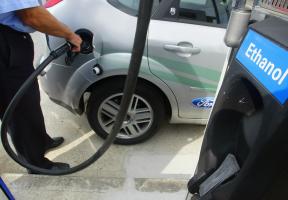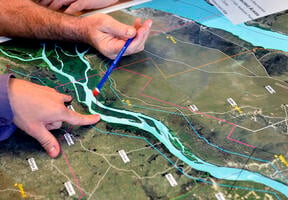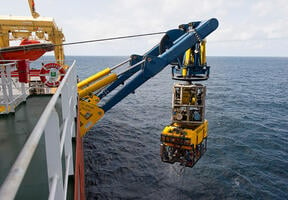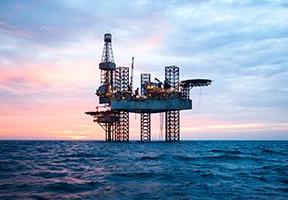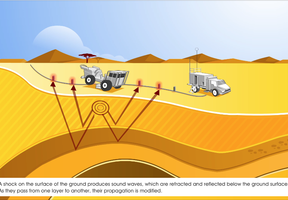Getting Oil & Gas from Refineries to Consumers
10 min read
A variety of transportation modes are employed to get petroleum products from refineries to consumers. Prior to delivery, they are stored at oil terminals, or depots, which are subject to strict safety and environmental regulations designed to protect the surrounding soil, water and air from pollution.
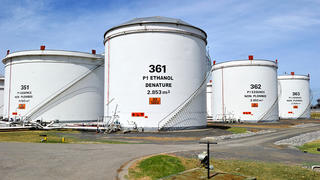
© Dufour Marco - Fuel storage tanks at the Feluy oil depot in Belgium.
Oil companies have to supply their many customers — businesses, governments and consumers — with the right product at the right time in a way that is cost-effective and safe for both people and the environment. That’s the job of the , which comprises refineries, storage facilities and a distribution network for getting the petroleum products to consumers.
Oil Terminals
Most countries have only a few refineries, and some have none. That’s why there are dedicated terminals for storing oil and petroleum products. These intermediate facilities help meet local demand quickly, since companies don’t have to constantly shuttle back and forth between refineries and delivery locations. In Europe, these facilities also house strategic petroleum reserves that can be tapped in the event of a crisis or shortage.
Petroleum products are shipped from refineries to terminals using bulk transportation methods, such as pipelines, tank cars, barges and ships. Oil terminals have between 10 and 30 steel tanks that can hold between 10,000 and 300,000 cubic meters of petroleum products, whether oil, gasoline, or jet fuel. France has around 50 large storage facilities, owned by the major oil companies.
Each terminal has a number of loading bays — up to a dozen for the biggest facilities — where the petroleum products are loaded onto tank trucks with a capacity of 10 to 30 tons. Some of these trucks have multiple compartments allowing them to carry several different products at the same time. The refined products are taken to smaller, secondary depots operated by independent resellers or directly to service stations.
Multiple Safety Systems
While monitored across the distribution chain to ensure optimum quality, petroleum products are hazardous substances that present a risk of fire and explosion.
Various measures are deployed to ensure distribution safety, including special licenses for tank truck drivers and regular vehicle inspections.
Refineries and oil terminals in the European Union are covered by the Seveso II Directive, introduced after an industrial accident at a plant in Seveso, Italy in 1976 and amended in 2003.
Authorities in the member states are responsible for ensuring the strict application of these safety regulations. The specific safety measures required for oil terminals include:
- Safety valves and floating covers on each tank, to prevent volatile products from dispersing in the atmosphere.
- Alarms, leak detectors and automatic shut-off valves on all tanks and pipes, to detect and contain leaks.
- Fixed and portable fire fighting equipment, such as sprinkler and drencher systems and water and foam monitors.
Special Measures to Protect the Environment
Oil terminals also have systems in place for preventing environmental pollution, such as:
- A vapor recovery unit to capture emissions in truck loading facilities.
- Secondary containment systems around tanks to hold any liquids that leak.
- Containment tanks for rainwater and water used to wash equipment.



